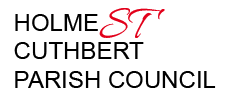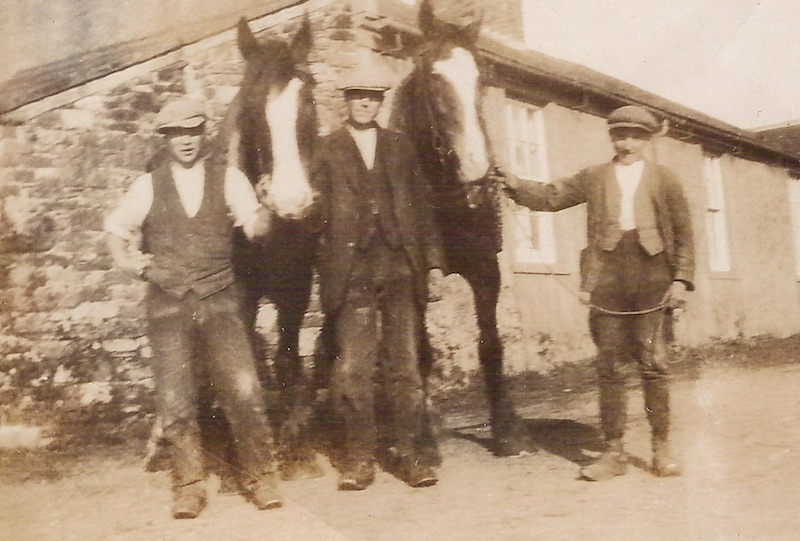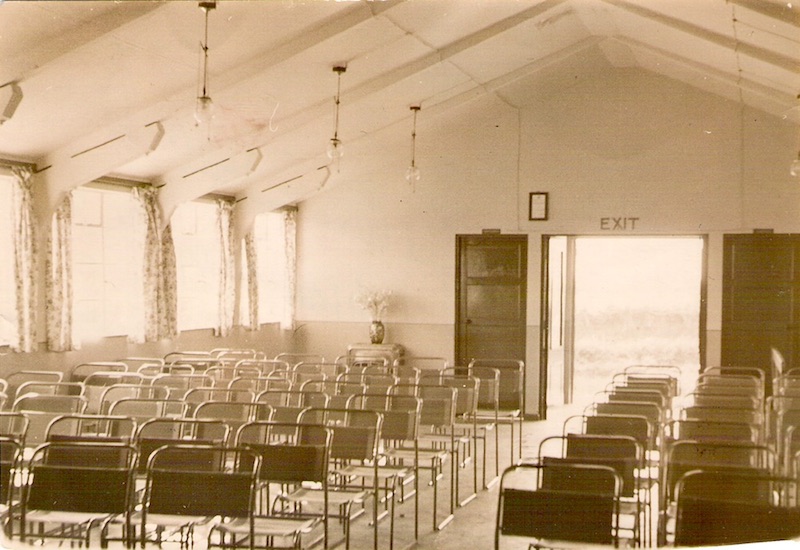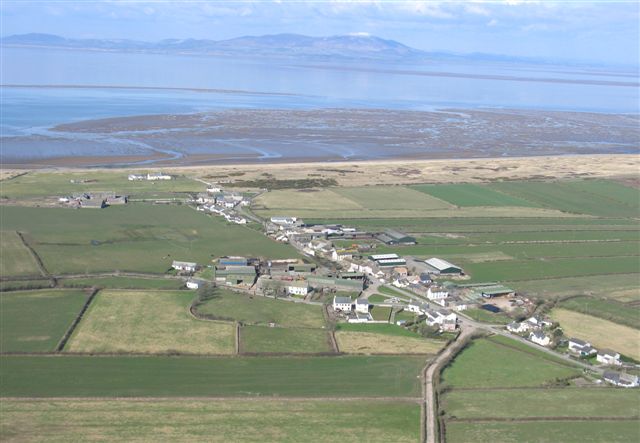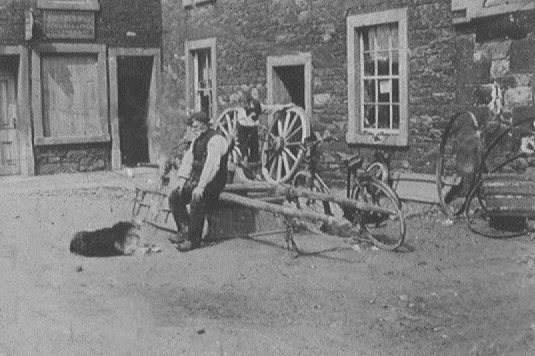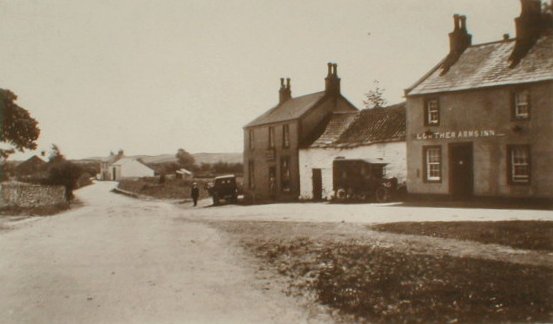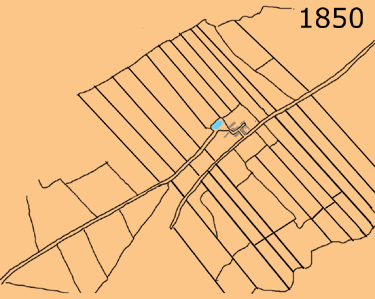Local History
A Brief History of Holme St Cuthbert Parish
The parish of Holme St Cuthbert is a unique and special place with a rich historical and cultural heritage stretching back thousands of years. This agricultural parish is a relatively small area of the vast (and in parts) sparsely populated and remote Solway Plain. Holme St Cuthbert parish was formed in 1857 when the four quarters of the large Holme Cultram parish were made into separate ecclesiastical areas.
There is evidence of people living in this area as early as 4,000 BC. Excavations in the parish have revealed a New stone age settlement just east of Mawbray, Iron Age round huts at Wolsty and a Roman fort and burial ground at Beckfoot. Numerous artifacts from these times including the Bronze Age are housed at Tullie House Museum in Carlisle, and Senhouse Roman Museum, Maryport.
During the time period between the Romans leaving, about 400 BC and the Cistercian monks settling in Holme Cultram in 1150 AD, this area was home to Celts followed by Angles and Saxons, Vikings and finally Normans.
Influences from these early times can still be seen around the parish today. The Anglo-Saxons introduced an open field system of farming where each farmer would cultivate a number of strips in one large open field. Remnants of this system can still be clearly seen at Mawbray and Edderside. The Vikings developed a style of building known locally as Clay Dabbin. Dwellings were constructed using the minimum amount of wood, which was in scarce supply in this area. A simple wooden frame was erected on a low cobble wall, with the walls being made from a mixture of clay,small stones and straw. Examples of this type of building can still be found around the parish. Many of the place names in the parish have their origins in Old English (derived from the Anglo-Saxon language) and Old Norse ( spoken by the Vikings).
Meanings of some Old English and Old Norse places names around Holme St Cuthbert Parish
Old English
Aikshaw – oak wood
Aldoth -old barn
Edderside -beside the watercourse
Foulskye – dirty stream
Goodyhills – Godlike (sacred) hills
Hailforth – corner ford
Hartlaw – Hart hill
High Laws – High mounds
Lowsay – Pig-sty hill
Mawbray – Maiden’s stronghold (castle)
New Cowper – New cow byre
Plasketlands -fence of living wood +land
Salta – Salt land
Southerfield – Cobbler’s field
Wolsty – Wolf’s path
Old Norse
Beckfoot – stream’s mouth
Pelutho – peeled oats hill
Tarns – tarn
The arrival of monks from Melrose Abbey in Scotland marks a new phase of development of the area. In 1150 they set about organising the building of a monastery, clearing and draining the land, making it habitable and profitable. When the Abbey and associated buildings were finished they covered ten acres of land. The Abbot and monastery became immensely wealthy and powerful and must have had an enormous influence over the area. Locally they would have provided some employment and support to the poor. The boom lasted until 1538 when Henry VIII passed the Act dissolving the Greater Monasteries. Holm Cultram Abbey along with 1,600 acres of land and all its possessions were surrendered to the crown effectively making the monks homeless. The Abbey soon fell into disrepair but parts of it have survived and it is still serving as a parish church today.
During the 18th and 19th centuries, a number of places of worship were built in the parish. In 1735 the Quakers purchased some land at Beckfoot for a burial ground and built a Meeting House which could seat ninety. The Meeting House closed in 1940 and was turned into a bungalow in 1970. The burial ground closed in 1991. The Wesleyan Methodist Chapel at Mawbray was opened in 1843. It cost £140 to build. The Chapel closed in the mid-1980’s and lay unused until the late 1990’s when it was bought and made into a private residence. In 1845 Holme St Cuthbert church, school and schoolhouse were completed. The church was originally built with a bell-cote which was replaced in 1874 by a wooden spire. A storm in 1919 damaged the spire which had to be removed and eventually a stone tower took its place. The church is still serving the parish today. Two other little chapels were built in the parish but unfortunately we have little information about them, Foulsyke Methodist Chapel built in1898 which is now a private residence and New Cowper Congregational Chapel built around the same time, closed in 1948 and was demolished in the 1970’s.
At one time there were three little schools in the parish. one in Mawbray open between 1803 -1867, one in Aldoth open between 1851-1957 and Holme St Cuthbert school opened in 1845 and is still going strong today.
The parish had two mills. A windmill used for milling corn stood at Bank Mill on the site of the present garden centre. It was built in 1837 along with joinery workshops and a blacksmiths, Unfortunately, the windmill was destroyed by fire in 1887 and never rebuilt. Beckfoot Woolen Mill built in 1795 was a substantial three-story building powered by a waterwheel. It was equipped with all the necessary equipment to spin and weave wool. Sometime after 1803 it was converted to a corn mill. We have no information about when it ceased operating and was demolished but we know part of it was used as a Primitive Methodist Chapel in 1925. By 1934 the Methodists had moved and were sharing Beckfoot Meeting House with the Quakers.
From the very earliest times, the great majority of people in this area worked on the land and made everything that was necessary for daily lives themselves. Over time specialist trades developed but farming has always been the main occupation.
The 1851 census shows 831 people living in this quarter of the Holm Cultram parish and among the householders were:
52 farmers
3 innkeepers
5 joiners/1apprentice
3 charwomen
4 shoemakers
36 labourers
1 flour dealer
3 house proprietors
1 schoolmaster
1 journeyman shoemaker
4 yeomen
1 tea dealer
1 horse breaker
2 schoolmistresses
1 registrar
7 landowners
1 bakehouse woman
2 drainers
3 millers/ 1 apprentice
7 dressmakers
4 blacksmiths/ 1 journeyman smith
1 apprentice smith
3 weavers
1 master mason/4 masons
1 journeyman mason
1 apprentice mason
6 tailors/1apprentice
1 curate
1 needlewoman
1 nailer
4 seamstresses
4 grocers/3 assistants
1 master mariner
2 annuitants
and 9 on parish relief
In 1936 a parish hall was built at Holme St Cuthbert at a cost of £350. The new hall was very popular as the spacious main hall had a sprung floor for dancing and a separate supper room and kitchen. Over the years many supper dances and social events have been held there. In 1951 Culterham hall in Mawbray was opened. The money to purchase the land and erect the building was raised by parishioners. Today the hall is still a well-used facility and an asset to the community.
Mains water eventually came to the parish in the 1930’s and electricity in the early 1950’s. Little has changed in the parish over the last few decades, a small number of new houses have been built and agricultural buildings erected. Today Holme St Cuthbert parish remains a peaceful and beautiful place to live,
Information and photographs were taken by permission from Plain People and more Plain People, books published by Holme St Cuthbert History Group.
Read more on Wikipedia
To view a map of local Footpaths and Bridleways please click here

